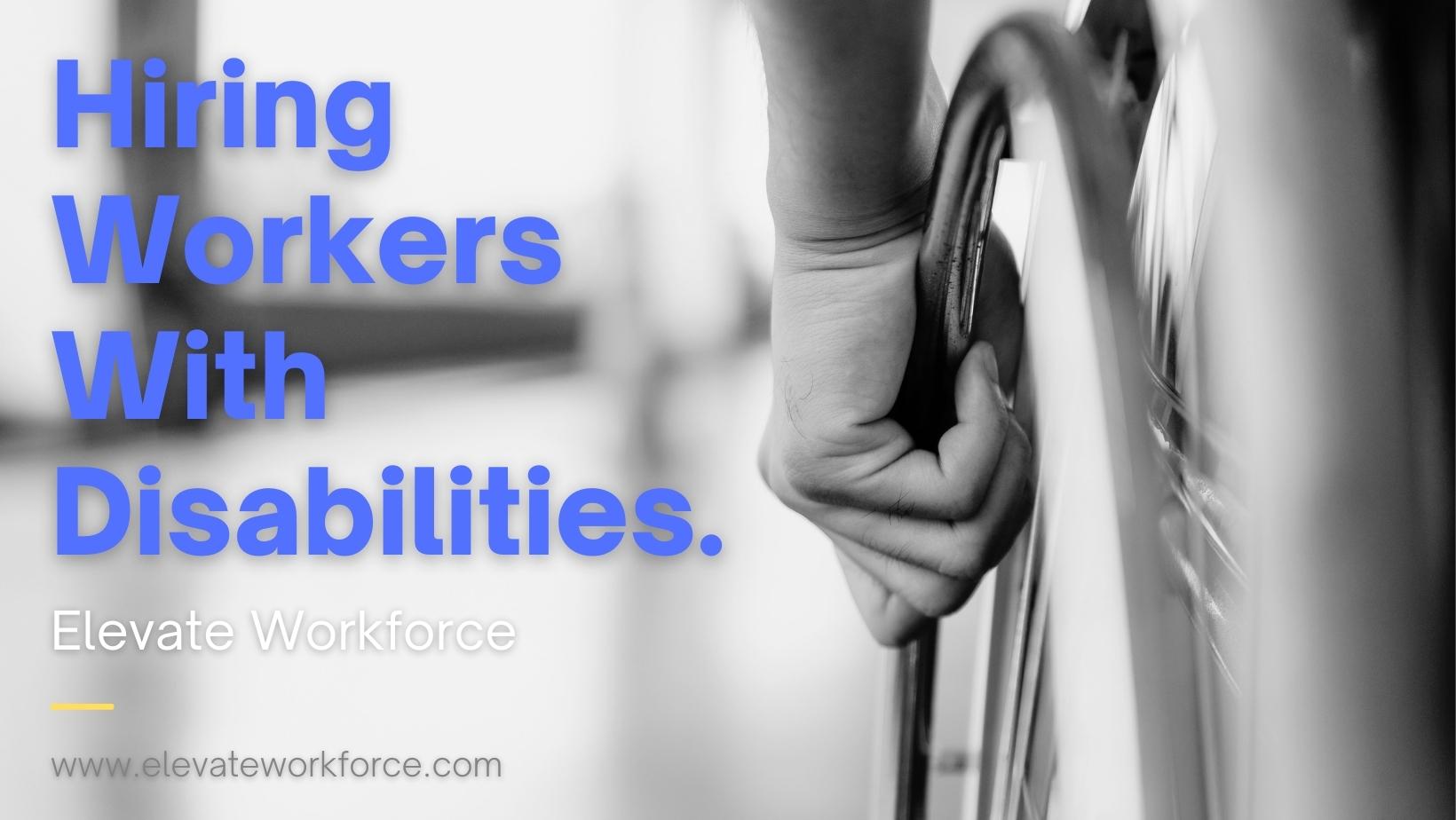What does having a disability mean?
A disability is any condition of the body or mind, an impairment that makes it more difficult for the person with the condition. Ultimately causing certain activity limitations along with how they are able to interact with the world around them. 1 in 4 Americans are living with a disability, we can only expect this ratio to increase for a period of time with Americans suffering from the aftermath of the Covid pandemic. Transforming your business to be disability inclusive is the next step.
“A machine cannot be made of all the same parts and fulfil a purpose, similarly, a company cannot be made of all of the same type of people and be beneficial to their community. Hiring different people makes a difference.”
-Tatum Logan
What does hiring someone with a disability look like?
Research shows that the benefits of hiring people with disabilities included large improvements in profitability. These improvements include profits and cost-effectiveness, turnover and retention, reliability and punctuality, employee loyalty, and your company image. Hiring someone with a disability could also give your company a competitive advantage such as diverse customers, customer loyalty and satisfaction, innovation, productivity, and work ethic. Creating an inclusive work culture and ability awareness amongst the community only has advantages.
Know every benefit available for your business to take advantage. Tax benefits are offered for a reason, to encourage companies to hire people with disabilities. The IRS sees the community comradery hiring people with disabilities creates. A list of the credits are listed below, check out (https://www.irs.gov/businesses/small-businesses-self-employed/tax-benefits-for-businesses-who-have-employees-with-disabilities ) for more information about what’s available for your business.
- Disabled Access Credit–The Disabled Access Credit provides a non-refundable credit for small businesses that incur expenditures for the purpose of providing access to persons with disabilities. An eligible small business is one that earned $1 million or less or had no more than 30 full time employees in the previous year; they may take the credit each and every year they incur access expenditures.
- Barrier Removal Tax Deduction–The Architectural Barrier Removal Tax Deduction encourages businesses of any size to remove architectural and transportation barriers to the mobility of persons with disabilities and the elderly. Businesses may claim a deduction of up to $15,000 a year for qualified expenses for items that normally must be capitalized. Businesses claim the deduction by listing it as a separate expense on their income tax return. Also, businesses may use the Disabled Tax Credit and the architectural/transportation tax deduction together in the same tax year, if the expenses meet the requirements of both sections. To use both, the deduction is equal to the difference between the total expenditures and the amount of the credit claimed.
- Work Opportunity Tax Credit– The credit provides employers incentives to hire qualified individuals from these target groups. The maximum tax credit ranges from $1,200 to $9,600, depending on the employee hired and the length of employment. The credit is available to employers for hiring individuals from certain target groups who have consistently faced significant barriers to employment. This includes people with disabilities and veterans.
Knowing the rights of a person with disability
The Americans with Disabilities Act (ADA) prohibits discrimination against people with disabilities and guarantees equal opportunities for individuals with disabilities in employment, transportation, public accommodations, state and local government services, and telecommunications. Two sections of the ADA relate to employment:
Title I: Employment prohibits covered employers from discriminating against people with disabilities in all employment-related activities, including hiring, pay, benefits, firing and promotions. Covered employers include private businesses, educational institutions, employment agencies, labor organizations, and state and local government entities with 15 or more employees.
Learn more about laws that apply to your place of business when hiring a person with a disability with websites like (https://www.dol.gov/agencies/odep/publications/fact-sheets/employment-laws-disability-and-discrimination).
Embrace disabilities in the workplace, understand how your employee’s disability has strengthened them as an individual and how those strengths can be helpful in your workplace. Your new employee will be thankful. Taking time to understand what makes people unique can grow us as individuals and help the person with the disability feel included, can improve their quality of life and income, enhance self-confidence, expand social networks, and give them a sense of community. Everything we want out of our work experience, we have the opportunity to now create that environment and give it to other individuals.



















